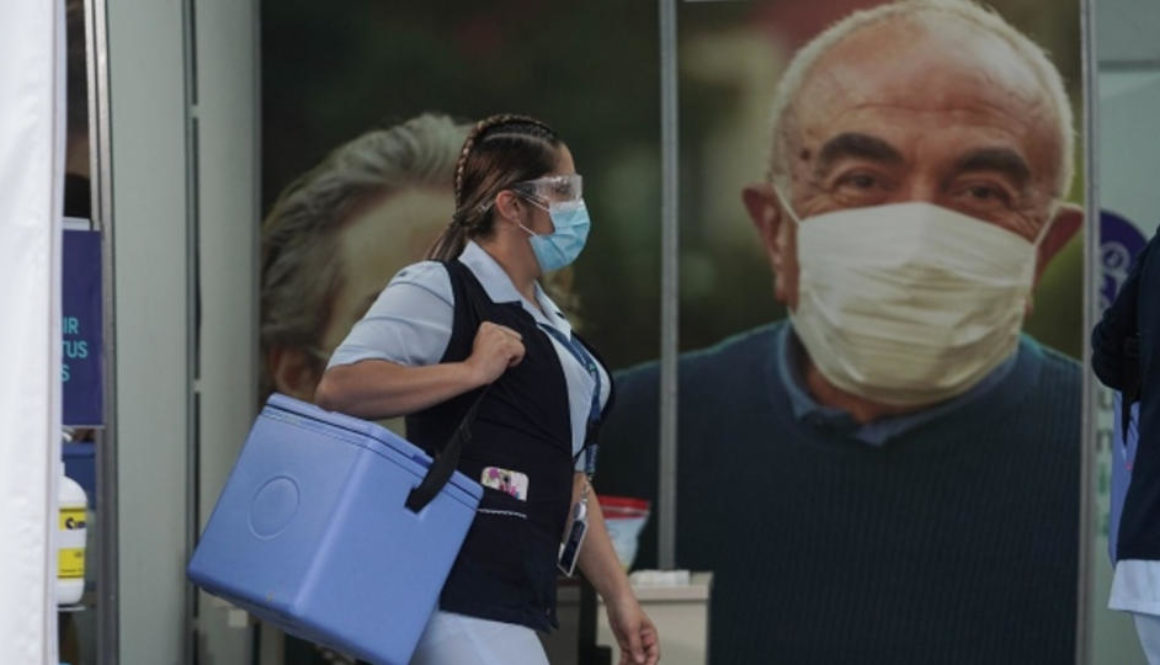Covid Hit Colombia Hard. Now It Face Big Vaccine Bills
Colombia is lagging behind its South American neighbors with only 0.3% of the population vaccinated, even as the country sees the second-highest number of infections on the continent.
(Bloomberg) — Colombia has already paid a steep price in the pandemic with more than 61,000 deaths from Covid-19. Now the country faces another cost: about US$850 million to immunize its population.

Colombia and other middle-income countries hit hard by Covid have lined up behind richer ones to buy vaccines in hopes of averting more suffering. They’ve pursued cheaper doses from AstraZeneca, as well as far more expensive shots from Moderna.
With an annual health budget of just US$10 billion for about 50 million residents, Colombia is one of many countries struggling to afford those immunizations. Health-care advocates have said that drugmakers have the upper hand in negotiations with governments that have limited cash and aren’t eligible for free doses. Emerging details show the extent of the squeeze.
Lacking the means and production capacity of wealthy nations such as the U.S. and Britain, middle-income countries urgently need vaccines to revive their economies and escape the pandemic, but must do so with health spending that’s been stretched tight for years.
Countries like Colombia “are against the wall,” said Carolina Gomez, co-founder of an advocacy group at Universidad Nacional de Colombia that works to ensure access to medicines and health technology. “They have no choice but to submit to what the drugmakers say.”
‘Biggest Mismatch’
Covax, a program that aims to deploy shots equitably to every corner of the globe, is helping many poor countries access immunizations by providing doses funded by donors. But it can’t cover the costs for countries like Colombia or supply enough to protect most of a country’s population.
So Colombia has done direct deals with Pfizer, Moderna, AstraZeneca, Johnson & Johnson and Sinovac Biotech for doses needed to supplement its purchases via Covax. The country agreed to buy 10 million doses from partners Pfizer and BioNTech at US$12 each, regulatory filings show.
The government meanwhile is paying about US$295 million for 10 million Moderna doses, according to Finance Ministry documents pointed out by researchers from Universidad Javeriana in Bogota. That’s equivalent to almost US$30 a dose, although it may include logistics expenses. The cost of 20 million doses through Covax comes to roughly US$225 million. The figures take into account some transport costs. Officials declined to provide more details.
High and middle-income countries will pay more than low-income nations for Pfizer’s shot, but at a significant discount from “normal benchmarks” during the pandemic, the company said. Pfizer said it won’t profit off supplies to poorer countries. Moderna didn’t respond to requests for comment.
Colombia has reported 2.3 million Covid cases, or about two out of every 100 worldwide. Tougher restrictions in major cities, fueled by rising infections at the start of the year, hampered recovery from its deepest economic contraction in history, and the government is planning tax increases and spending cuts.
Middle-income nations face “a particular dilemma,” said Anna Bezruki, a researcher at the Global Health Centre at the Graduate Institute of International and Development Studies in Geneva. With vaccine spending, “you’re taking a big slice of the pie” that could have been devoted to other health-care priorities, she said.
A number of those governments, including Latin American countries like Argentina and Peru, are especially vulnerable, said Thomas Bollyky, director of the global health program at the Council on Foreign Relations. Middle-income nations, excluding China, represented almost half of the global burden of coronavirus cases last month, but only 17% of vaccine doses given, according to a report by the CFR’s Think Global Health initiative.
“It’s middle-income countries where you see the biggest mismatch between an expanding pandemic and a scarcity of vaccines,” Bollyky said. “Distributing different amounts of vaccines to different locations isn’t necessarily unfair, provided that they’re going where they can do the most good and where the crisis is the greatest, but that isn’t what seems to be happening.”


You must be logged in to post a comment.